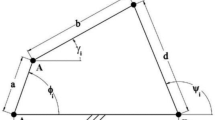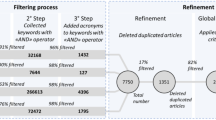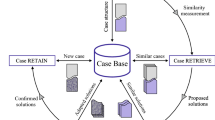This paper describes a knowledge-based and object-oriented approach for the design of the feed system for plastic injection moulds. The gating system of a plastic injection mould plays a significant role in producing a quality part. Designing of this gating system entails a great amount of effort from an experienced designer and it is time-consuming. CADFEED (Computer-Aided Design of the FEED system of the plastic injection mould) is developed to accurately and efficiently design the type, location and size of a gating system of a plastic injection mould. This system provides an accurate and fast means of obtaining solutions based on the users' requirements, which are easily handled by the rating algorithm in the system. CADFEED generates acceptable solutions at a lower cost than most traditionally and commercially available analysis packages. This system can be used to verify designs proposed by the design engineers. It can also help novice engineers in the understanding of mould design. Another important feature of CADFEED is that it is a low cost system, which uses AutoCAD and an expert system shell on a personal computer. This feature makes CADFEED easily affordable by small-scale industries.
Similar content being viewed by others
References
Booch, G. (1991) Object-Oriented Design with Applications, Benjamin/Cummings, CA.
Cinquegrana, D. and McCarthy, S. (1990) Mould optimisation using rule-based software, in Proceedings of the 48th SPE Annual Technical Conference and Exhibition (ANTEC'90), Dallas, pp. 1107–1113.
Cunningham, J. J. and Dixon, J. R. (1988) Designing with features: the origin of features, in Proceedings of the Computers in Engineering Conference, ASME, 1, pp. 237–243.
Huh, Y. J. and Kim, S. G. (1990) A knowledge-based CAD system for injection moulding, in Proceedings of the 1st International Conference on Die and Mould Technology, Shanghai, China, pp. 341–348.
Hui, K. C. and Tan, S. T. (1992) Mould design with sweep operations—a heuristic search approach. International Journal of Computer-Aided Design, 24(2), 81–91.
Ioanniso, P. and Kao, J. F. (1990) DETECTOR: a knowledge-based system for injection moulding diagnostics. Journal of Intelligent Manufacturing, 1, 49–58.
Irani, R. K., Kim, B. H. and Dixon, J. R. (1989) Automated injection mould gating design system, in Proceedings of the 47th SPE Annual Technical Conference and Exhibition (ANTEC'89), New York, pp. 1265–1269.
Irani, R. K., Kim, B. H. and Dixon, J. R. (1990a) Automated design of the feed system of injection mould, in Proceedings of Manufacturing International '90, pp. 45–51.
Irani, R. K., Kim, B. H. and Dixon, J. R. (1990b) Integrating CAE, features and iterative redesign to automate the design of injection moulds, in Proceedings of the Computers in Engineering Conference, ASME, 2, pp. 27–33.
Jong, W. R. and Wang, K. K. (1990) Automatic and optimal design of runner systems in injection moulding based on flow simulation, in Proceedings of the 1990 48th SPE Annual Technical Conference and Exhibition (ANTEC'90), Dallas, pp. 385–389.
Kim, S. G. and Suh, N. P. (1986) Expert design system for injection moulding, in Proceedings of the 1986 ASME Winter Annual Meeting, ASME Production Engineering Series, 24, pp. 311–325.
Kwon, T. H. and Weeks, P. A. (1988) Expert system aid for intelligent moulding cooling system design, in Proceedings of the Computers in Engineering Conference, ASME, 1, pp. 281–286.
Lee, S. H. and Lee, K. (1988) An integrated CAD system for mould design in injection moulding process, in Proceedings of the 1988 ASME Winter Annual Meeting, Chicago, pp. 251–271.
Luby, S. C., Dixon, J. R. and Simmons, M. K. (1986) Creating and using a features data base. Computers in Mechanical Engineering, Nov., 25–33.
Ong, S. K., Prombanpong, S. and Lee, K. S. (1992) A computer-aided gating system design for plastic injection moulds, in Proceedings of the 2nd International Conference on Die and Mould Technology, Singapore, pp. 726–739.
Pandelidis, I. and Zou, Q. (1990) Optimisation of injection moulding design. Part I: gate location optimisation. Polymer Engineering and Science, 30(15), 873–882.
Pye, R. G. W. (1989) Injection Mould Design (2nd edn), Longman, London, UK.
Saxena, M. and Irani, R. K. (1992) Automated gating plan synthesis for injection mould, in Proceedings of the Computers in Engineering Conference, ASME, 1, 381–388.
Salloum, G., Charland, D. and Brouwers, X. (1986) PLASFEED—an interactive design software of feeding system for injection mould using solid modelling, in Proceedings of the 1986 44th SPE Annual Technical Conference and Exhibition (ANTEC'86), Boston, pp. 1412–1418.
Wang, K. K. and Wang, V. M. (1987) Computer-aided mould design and manufacturing, in Injection and Compression Moulding Fundamentals (4th edn), A. V. Isayer, Marcel Dekker, New York.
Wong, C. M., Leung, T. P. and Lee, K. W. (1991) PLASTIC ANALYST: an expert system assisting selection of plastic material and trouble shooting in injection moulding, in Proceedings of the 5th Manufacturing Conference, pp. c13–c18.
Author information
Authors and Affiliations
Rights and permissions
About this article
Cite this article
Ong, S.K., Prombanpong, S. & Lee, K.S. An object-oriented approach to computer-aided design of a plastic injection mould. J Intell Manuf 6, 1–10 (1995). https://doi.org/10.1007/BF00123672
Issue Date:
DOI: https://doi.org/10.1007/BF00123672




